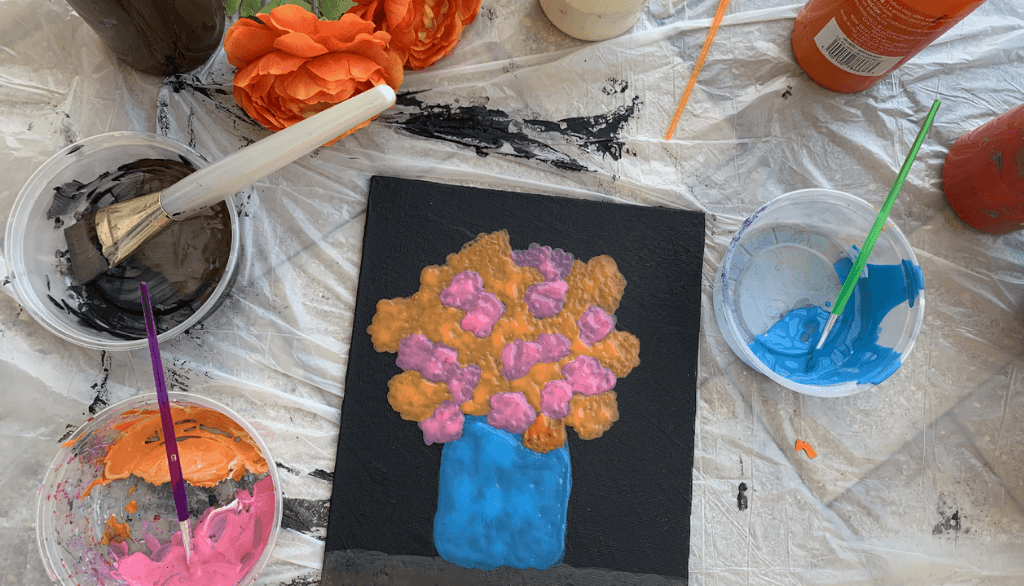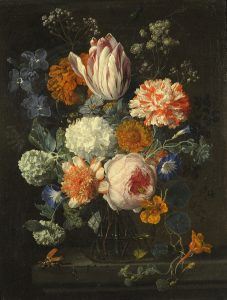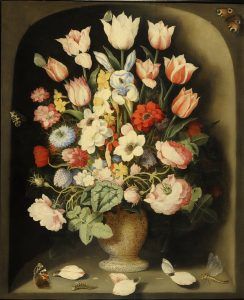Paint Your Own Still Life!

As the weather begins to warm up, flowers are in bloom all around us! To celebrate the season and learn why Dutch and Flemish artists were so inspired by flowers, the MFA is hosting a special exhibition called In Full Bloom: Netherlandish Flower Paintings and Trade.
In the 1600s, trade routes around the world allowed gardeners in the Netherlands to collect and grow a wide range of plants from other countries. People living in the Netherlands had never seen many of these plant species before and quickly adopted them into their homes and lives. Artists, too, were inspired by these flowers and painted them in a variety of still lifes. A still life is a painting of inanimate, household items like flowers, foods, or books.
Tulips were among the most popular flower during this time, even leading to a craze known as “Tulipomania.” Native to Turkey, these flowers represented beauty and luxury. In this painting, artist Nicolaes van Verendael shows tulips alongside local flowers like viburnum and honeysuckle:

In addition to exotic flowers, these still lifes often featured insects to animate the painting and add a sense of realism. Butterflies were among the most common and represented life and resurrection. Artist Osias Beert included butterflies and dragonflies in his still life:

Try painting your own still life at home! Take a walk around your neighborhood to search for flowers and other beautiful plants to paint. You could also use fake flowers or find an image online to be your inspiration. Once you’ve chosen your subject and arranged your still life, follow the steps below to create your masterpiece. Use #MFAfromHome to share your creations with us online!
Materials:
• Paper or canvas
• Pencil
• Paint, markers, or other coloring supplies
Directions:
1. Use a pencil to sketch your still life. This will be the outline you follow as you fill in your artwork with color.
2. If you are using paint and want a dark background, paint the entire canvas or paper with several coats of black paint. Let the paint completely dry before starting to paint your flowers.
3. Use your paint, markers, or other coloring supplies to create your flowers. Use your imagination to add butterflies, like the Dutch and Flemish masters!
4. Extra fun: While you wait for your painting to dry, or once you’ve finished creating your artwork using other mediums, identify and research the types of flowers and plants you used. Write a paragraph about each species, noting where that plant is from and any other interesting facts you can find.
Nicolaes van Verendael (Flemish, 1640–1691), Still Life of tulips, convolvulus, rose and other flowers in a glass vase on a ledge, Oil on canvas, Grasset Collection
Osias Beert (Flemish, 1580–1624), Still Life of flowers in a stone vase in a niche, Oil on panel, Grasset Collection
YOuth activities funded in part by:



